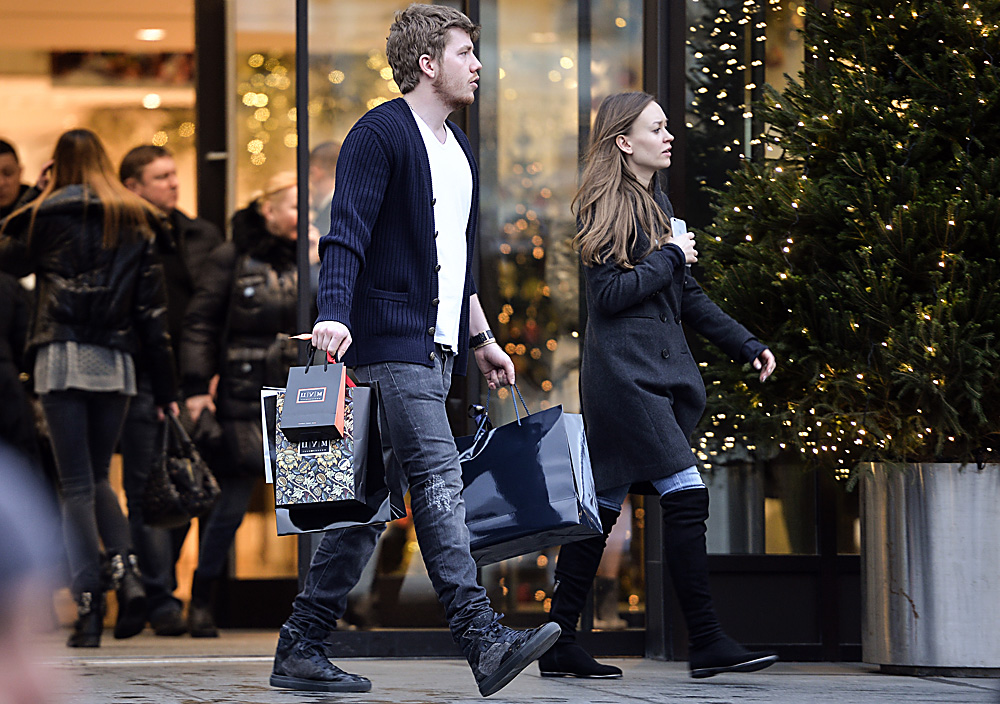
Currently about 30 percent of the people staying in luxury hotels are foreigners.
Vladimir Astapkovich/RIA NovostiBack in February, CNNMoney published a ranking of prices for the iPhone 6s in various countries and it turned out that Russia is now one of the cheapest places to buy Apple products.
Only in Canada, the UAE, Hong Kong and the U.S. is the gadget cheaper. But phones are just a part of a trend that is seeing growing numbers of foreigners taking advantage of the weak ruble by picking up consumer goods during visits to Russia, from cosmetics to cars.
Only two years ago the Russian capital, according to a Mercer survey, was one of the 10 most expensive cities for foreigners. Last year Moscow dropped to 50th place, meaning almost any foreign tourist can now stay at a hotel overlooking the Kremlin.
First-rate hotels are now twice as cheap in dollar value, while there are also seasonal discounts of up to 40 percent. For example, in March 2016 you could stay at a 5-star Moscow hotel for $120 a night and at a 4-star hotel for $70-80.
Currently about 30 percent of the people staying in luxury hotels are foreigners, mostly from China and Southeast Asia, the U.S. and Europe, said Marina Smirnova, director of hotel business and tourism at Cushman & Wakefield.
In 2015 about 13 percent of luxury brand products in Russia were bought by foreigners, according to Daria Yadernaya, general director of Y-consulting and an expert on the fashion-retail market. Most popular are bags, footwear and clothes.
Tourists from China, Taiwan and South Korea are the biggest purchasers, constituting 80-85 percent of foreign buyers, while European tourists constitute 5-7 percent. The remaining 7-8 percent of tourists come from other countries, including the CIS (mostly from Kazakhstan).
The high demand from Asia is due to the prices: Goods in Russia cost 70 percent less than in China. However, luxury brands are only 10 percent cheaper than in the EU. Foreigners show great interest in brands such as Chanel, Hermes, Dior, Valentino, Louis Vuitton and young conceptual brands such as N°21 and Vetements.
A source at Louis Vuitton confirmed the enthusiasm of Asian tourists. Demand among Europeans is lower, and they buy only when the euro reaches its maximum against the ruble and when it is most advantageous for them, according to the source.
For example, when the euro costs over 80 rubles, demand among foreigners increases by 25-30 percent. When the euro falls against the ruble, demand is no more than 10 percent higher.
Another trend that became very popular in 2015 is cosmetics tourism.
"We received our biggest order from a Vietnamese. He bought cosmetics for one and a half million rubles," said Mikhail Pesterev, general director of the CityNature.ru online cosmetics shop. He added that many buy cosmetics in Russia not only for themselves but also to resell them.
"Before, quality cosmetics in Russia cost $8 a tube for foreigners, but after the fall of the ruble the price has gone down to $4.5. Back home foreigners sell it for $10. The margins now justify delivery and other costs," explained Pesterev.
More and more foreigners are also noticed in stores such as Natura Siberica, Love 2 Mix and Teana. Tourists from Southeast Asia and Central Asia buy products from these companies more than anyone else.
"In general, cosmetics tourists buy lotions that brighten the skin," said Pesterev.
According to the Avto.ru website, after the devaluation of the ruble demand for used cars in Russia drastically increased among foreigners.
In January 2016 foreigners read twice as many “for sale” ads on the site than they had done in the same period a year earlier.
Meanwhile, car offers from Russia on sites in Belarus, Kazakhstan and Germany grew by 26 percent. Avto.ru's representatives explain that cars are up to 30 percent cheaper in Russia in respect to Europe.
Foreigners show a particular liking for the BMW X5, the Audi A6, the Mercedes-Benz E-Class, the Kia Sportage and the Volvo XC90.
The 2011 BMW X5 can be bought in Russia for 20,000 euros, while in Belarus the car costs 26,000 euros ($30,000) and in Germany 29,000 euros.
Most of the tourists come from Southeast Asia, primarily from China (+60 percent in 2015), with which Russia has a visa-free regime for tourists that enter Russia through Vladivostok. The number of tourists from India, South Korea, Iran (which is the leader in terms of growth: +111 percent) and Israel has also increased. At the beginning of 2016 the Momondo search engine registered a growth in ticket reservations from Germany, the U.S., Denmark, Norway, Israel and the UK. Besides Moscow and St. Petersburg, other popular Russian cities are Kazan and Nizhny Novgorod. Chinese tourists have a preference for Vladivostok.
All rights reserved by Rossiyskaya Gazeta.
Subscribe
to our newsletter!
Get the week's best stories straight to your inbox